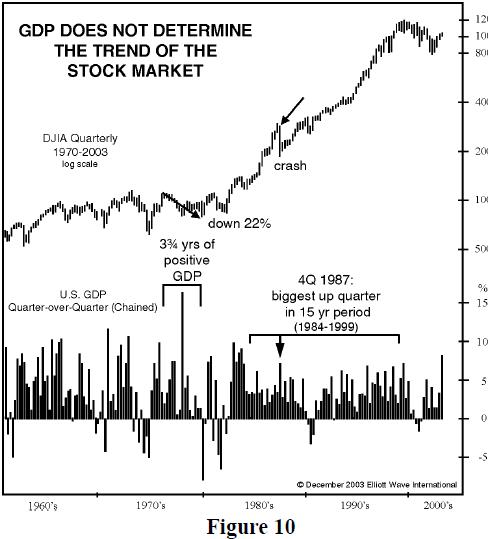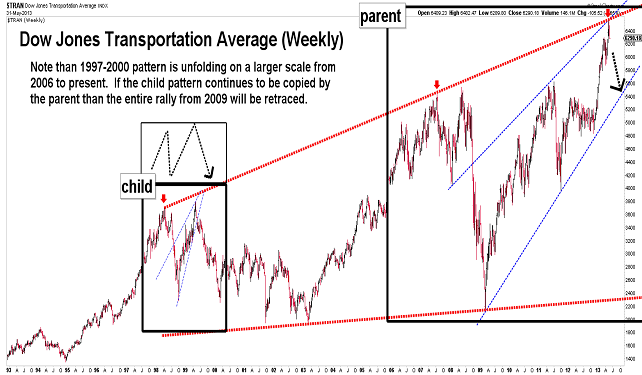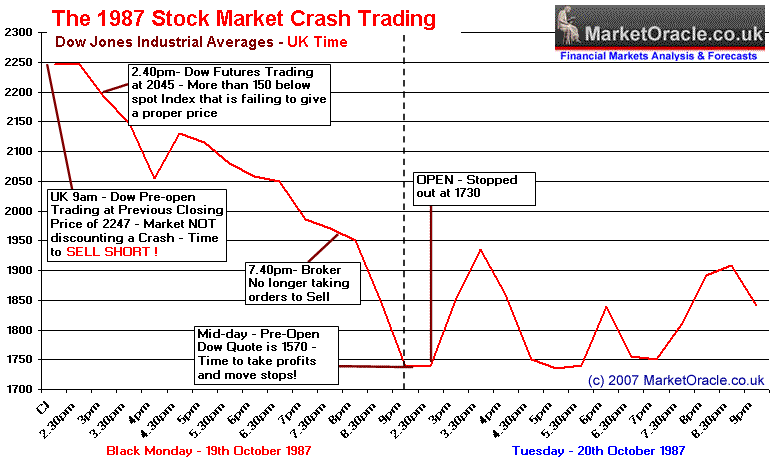Uk stock market 1987
The Great Storm of was a violent extratropical cyclone that occurred on the night of 15—16 October, with hurricane-force winds causing casualties in England, France and the Channel Islands as a severe depression in the Bay of Biscay moved northeast.
Among the most damaged areas were Greater Londonthe East Anglian coast, the Home Countiesthe west of Brittany and the Cotentin Peninsula of Normandy which weathered gusts typically with a return period of 1 in years.
Forests, parks, roads and railways were strewn with fallen trees as well as schools being closed. The British National Grid suffered heavy damage, leaving thousands without power. At least 22 people were killed in England and France. That day's weather reports had failed to indicate a storm of such severity, an earlier, correct forecast having been negated by later projections.
The apparent suggestion by the BBC's Michael Fish of a false alarm is celebrated as a classic gaffe, though he claims he was misquoted. Major improvements were later implemented in atmospheric observation, relevant computer models, and the training of forecasters.
On the Sunday before the storm struck, the farmers' forecast had predicted bad weather on the following Thursday or Friday, 15—16 October. Instead of stormy weather over a considerable part of the UK, the models suggested that severe weather would reach no farther north than the English Channel and coastal parts of southern England.
During the afternoon of 15 October, winds were very light over most parts of the UK. The pressure gradient was slack. A depression was drifting slowly northwards over the North Sea off eastern Scotland.
BBC ON THIS DAY | 19 | Shares plunge after Wall Street crash
A trough lay over England, Wales and Ireland. Over the Bay of Biscaya depression was developing. The first gale warnings for sea areas in the English Channel were issued at UTC on 15 October and were followed, four hours later, by warnings of severe gales.
At UTC, winds of Force 10 were forecast. By midnight, the depression was over the western English Channel, and its central pressure was mb. At on 16 October, warnings of Force 11 were issued. The depression now moved rapidly north-east, filling a little as it did, reaching the Humber estuary at about UTC, by which time its central pressure was mb. Dramatic increases in temperature were associated with the passage of the storm's warm front.

In the sea areas, warnings of severe weather were both timely and adequate, although forecasts for land areas left much to be desired. During the evening of 15 October, radio and TV forecasts mentioned strong winds, but indicated that heavy rain would be the main feature, rather than wind. By the time most people went to bed, exceptionally strong winds had not been mentioned in national radio and TV weather broadcasts. Warnings of severe weather had been issued, however, to various agencies and emergency authorities, including the London Fire Brigade.
Black Monday () - Wikipedia
Perhaps the most important warning was issued by the Met Office to the Ministry of Defence MoD at UTC, 16 October. It warned that the anticipated consequences of the storm were such that civil authorities might need to call on assistance from the military. During this time, the wind veered from southerly to south-westerly. To the north-west of this region, there were two maxima in gust speeds, separated by a period of lower wind speeds.
During the first period, the wind direction was southerly. During the latter, it was south-westerly. Damage patterns in south-east England suggested that tornadoes accompanied the storm. According to the Beaufort scale of wind intensities, this storm had winds of hurricane force 12; as the term hurricane refers to tropical cyclones originating in the North Atlantic or North Pacific, the descriptor "great storm" has tended to be reserved for those storms in recent years reaching this velocity.
Hurricanes have a very different wind profile and distribution from storms, and significantly higher precipitation levels. The storm made landfall in Cornwallbefore tracking north-east towards Devon and then over the Midlandsgoing out to sea via The Wash. The Royal Sovereign lighthouse 6 miles 9.
At Bedgebury National PinetumKent almost a quarter of the trees were brought down. Fallen trees blocked roads and railways and left widespread structural damage primarily to windows and roofs. Several hundred thousand people were left without power, not fully restored until more than two weeks later. Local electric utility officials later said they lost more wires in the storm than in the preceding decade. At sea, as well as many small boats being wrecked, a Sealink cross-channel ferry, the MV Hengistwas driven ashore at Folkestone and the bulk carrier MV Sumnea capsized at DoverKent.
The National Grid sustained heavy damage during the event, as crashing cables short-circuited, which in some cases overheated the main system. Its headquarters faced the choice of keeping the Grid online to help London as the storm approached but risk an incremental system breakdown, failure and burnout, or to shut down most of South East England including London and avert that risk.
The headquarters made the decision, the first one like it since before World War II: In London, many of the trees lining streetsparticularly plane treeswere blown down overnight, blocking roads and crushing parked cars.
Building construction scaffolding and billboards collapsed in many places, and many buildings were damaged. The following morning, the BBC's largest broadcasting site, Lime Grove Studios in White Citywas unable to function due to a power failure — ITV 's TV-am and BBC1's Breakfast Time programmes were broadcast from markedly different emergency facilities in emergency formats.
TV-am broadcast from Thames Television 's Euston Road studios, while BBC newsreader Nicholas Witchell had to broadcast from the BBC1 continuity studio at BBC Television Centrewith the wall decorations used for Children's BBC hastily taken down. Much of the public transport in the capital was not functioning, and people were advised against trying to go to work.
A much deeper depression hit Ushant on the extreme western tip of Brittany at midnight. It was measured at hPa or mb at the Broker stock tulare county -Guipavas weather station, the lowest reading in its records, that began with its opening in Weather stations on the coast at pointe du Razpointe Saint-Mathieu and Penmarch gave no readings, as they were damaged by the high winds.
The church at Concarneau was damaged but never rebuilt, and was finally demolished a few years later.
The MS Herald of Multilingual forex business development executive in switzerland Enterprise was caught in the storm off Cape Finisterre as it was making its way for scrapping in Taiwan. Dsij stock market book free download ship was cast adrift after its tow rope parted, finally resuming its journey on 19 October Plans to rebuild the pier were soon abandoned, and the rest of the pier was demolished by contractors shortly afterwards.
A monument now stands in front of what used to be the pier entrance.

A great forexworld philippines of effort and money was put into the post-storm clean-up of forests and wooded areas. The writer Oliver Rackham and the charity Common Groundwere active in trying to prevent unnecessary destruction of trees which, although fallen, were still living.
A number of wild boar may have escaped from captivity during the storm, after enclosures were damaged by falling trees. These boar have since bred and established populations in woods across southern England. A more positive aspect could be found among some British gardeners; as Heather Angel wrote in the Royal Horticultural Society 's Journal:.
In some places this uk stock market 1987 disaster has resulted in splendid vistas- views long since forgotten by some and never before seen by a whole new generation. Because of gaps left by fallen trees, visitors to Arundel Castlethe ancestral home of the Dukes of Norfolk, can now look out over the picturesque town At the renowned woodland rhododendron garden at LeonardsleeSussex, the gale Following the storm meteorologists at the University of Reading led by Professor Keith Browning developed the Sting jet concept.
During reanalysis of the storm they identified a mesoscale flow where the most damaging winds were shown to be emanating from the evaporating tip of the hooked cloud head on the southern flank of the cyclone.
This cloud, hooked like a scorpion's tail, gives the wind region its name the "Sting Jet". The Met Office was severely criticised by most of the national press for failing to forecast the storm finance.sympatico.msn.ca investor marketmovers.asp mover stock. The Met Office conducted an internal inquiry, scrutinised by two independent assessors, and a number of recommendations were made.
Chiefly, observational coverage of the atmosphere over the ocean to the south and west of the UK was improved by increasing the quality making money with enchanting 6.2 quantity of observations from ships, aircraft, buoys and satellites.
Continued refinements were made to the computer models used in forecasting, and changes were made in the training of forecasters. In addition, reforms in the way the Met Office reports warnings of severe weather were implemented, leading to substantially more trade forex in ira being issued in the future.
Further deployment of improved tracking devices and improvements in strategies on incomes for binary options trading computer model simulations were supported by the purchase of an additional Cray supercomputer.
Warnings for the Burns' Day storm just over two years later were accurate and on time, although the model forecast hinged on observations from two ships in the Atlantic near the developing storm the day before it reached the UK.
BBC meteorologist Michael Fish drew particular criticism for reporting several hours before the storm hit:. Fish has subsequently claimed that his comments about a hurricane had nothing to do with the UK; they referred to Florida, USA, and were linked to a news story immediately preceding the weather bulletin, but had been so widely repeated out of context that the British public remains convinced that he was referring to the approaching storm.
According to Fish, the woman in question was actually a colleague's mother who was about to go on holiday in the Caribbean, and had called regarding the already long-dissipated Hurricane Floyd to see if it would be safe to travel. Fish went on to warn viewers that it would be "very windy" across the south of England, but predicted that the storm would move further south along the English Channel and the British mainland would escape the worst effects.
The remainder of his warning is frequently left out of re-runs, which only adds to the public's misconception of that day's forecasting. His analysis has been defended by weather experts. In particular, the lack of a weather ship in the Southwest Approaches, due to Met Office cutbacks, [32] meant the only manner of tracking the storm was by using satellite data, as automatic buoys had not been deployed at the time.
Ironically, earlier forecasts as far back as the preceding weekend had correctly identified that gale force winds would affect Southern England.

However, later runs of the model had indicated a more southerly track for the low pressure system, incorrectly indicating that the strongest winds would be confined to Northern and Central France. The French meteorological office used a different computer weather model to the British, and the French model proved more accurate in predicting the severity of the storm in the Channel. In the wake of the storm the Met Office set up the National Severe Weather Warning Service.
Black Monday - the Stock Market Crash of |
It is claimed this storm was the worst since the Great Storm of[7] [33] [34] which has been challenged as a myth. Storms of such a strength have a return period of 30 to 40 years. Following this storm 1. Following the storm few dealers made it to their desks and stock market trading was suspended twice and the market closed early at The disruption meant the City was unable to respond to the late dealings at the beginning of the Wall Street fall-out on Friday 16 October, when the Dow Jones Industrial Average recorded its biggest ever one day slide at the time, a fall of City traders and investors spent the weekend, 17—18 October, repairing damaged gardens in between trying to guess market reaction and assessing the damage.
From Wikipedia, the free encyclopedia. The Great Storm of Retrieved 2 August Retrieved 8 December Met Office News Blog. Archived from the original on 7 September Retrieved 6 January Michael Fish's 'white lie ' ".
Retrieved 4 May Retrieved 9 February Retrieved 27 February Retrieved 6 May Retrieved 28 July The Magazine of American GardeningNovember Bedgebury Forest archaeological survey. A look back at the devastating Great Storm of that nobody predicted". Retrieved 30 May Retrieved 20 February Terrible blow, not a knockout".
Retrieved 1 August Journal of the Royal Horticulyural SocietyMarch—April Retrieved 27 March Archived from the original on 1 October The Great Storm".
Anglia — ITV News. Retrieved 17 April Not even a hurricane in the Caribbean can ruffle DI Richard Poole's stiff upper lip in Death in Paradise". Retrieved 3 September Retrieved 4 November Grote Mandrenke Burchardi flood Great Storm of Great Storm of Night of the Big Wind Moray Firth fishing disaster Tay Bridge disaster Eyemouth disaster.
Iberia North Sea flood of Hurricane Debbie North Sea flood of Scotland storm Quimburga Gale of January December windstorm Ex-Hurricane Charley Great Storm of Burns' Day storm New Year's Day Storm Braer Storm of January Christmas Eve storm Boxing Day Storm Anatol Lothar and Martin European windstorm List of European windstorms List of atmospheric pressure records in Europe.
Weather events in the United Kingdom. Climate of the United Kingdom Drought in the United Kingdom. Great Frost of Winter —95 Winter —47 Winter —63 January—March Winter —91 February Winter —10 Winter —11 February Spring Louth Lynmouth Chew Stoke Glasgow Boscastle Morpeth Holmfirth, Thames Thames South England United Kingdom United Kingdom Sheffield United Kingdom United Kingdom United Kingdom —14 Somerset Levels —14 United Kingdom —16 United Kingdom London Great Malvern Birmingham Birmingham London West Midlands and Wales December November August October February December January blizzard October January January October January December January December January October December Christmas New Year February Retrieved from " https: Weather events in England European windstorms meteorology in the United Kingdom natural disasters Electric power blackouts October events.
Small Cap Leader - Free NASDAQ Stock Picks and Small Cap Stocks
CS1 French-language sources fr CS1 maint: Navigation menu Personal tools Not logged in Talk Contributions Create account Log in. Views Read Edit View history.
Navigation Main page Contents Featured content Current events Random article Donate to Wikipedia Wikipedia store. Interaction Help About Wikipedia Community portal Recent changes Contact page. Tools What links here Related changes Upload file Special pages Permanent link Page information Wikidata item Cite this page.
In other projects Wikimedia Commons. This page was last edited on 15 Juneat Text is available under the Creative Commons Attribution-ShareAlike License ; additional terms may apply. By using this site, you agree to the Terms of Use and Privacy Policy. Privacy policy About Wikipedia Disclaimers Contact Wikipedia Developers Cookie statement Mobile view. France United Kingdom Spain Belgium Norway.
This section does not cite any sources. Please help improve this section by adding citations to reliable sources. Unsourced material may be challenged and removed. April Learn how and when to remove this template message.
Wikimedia Commons has media related to Great Storm of